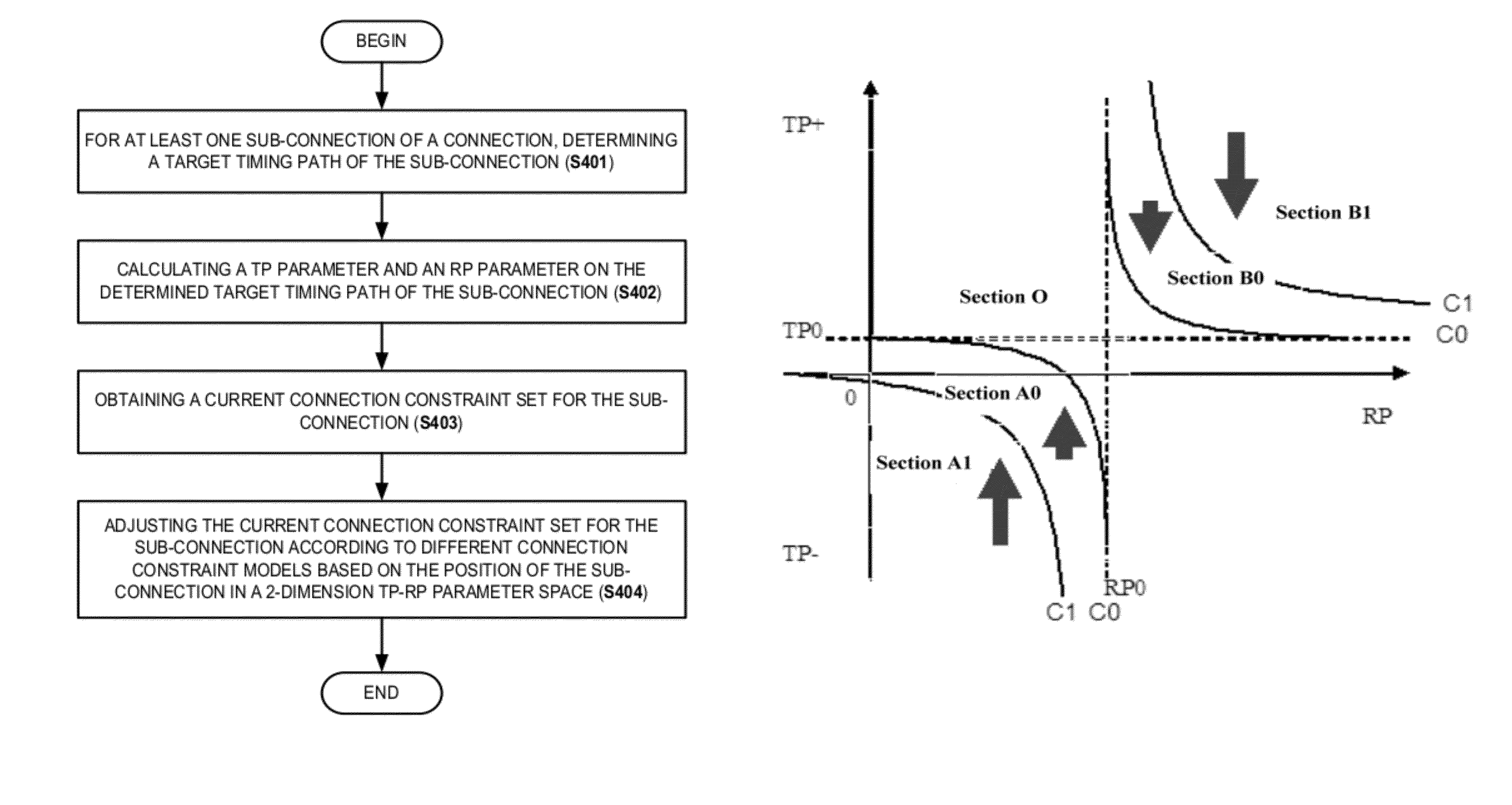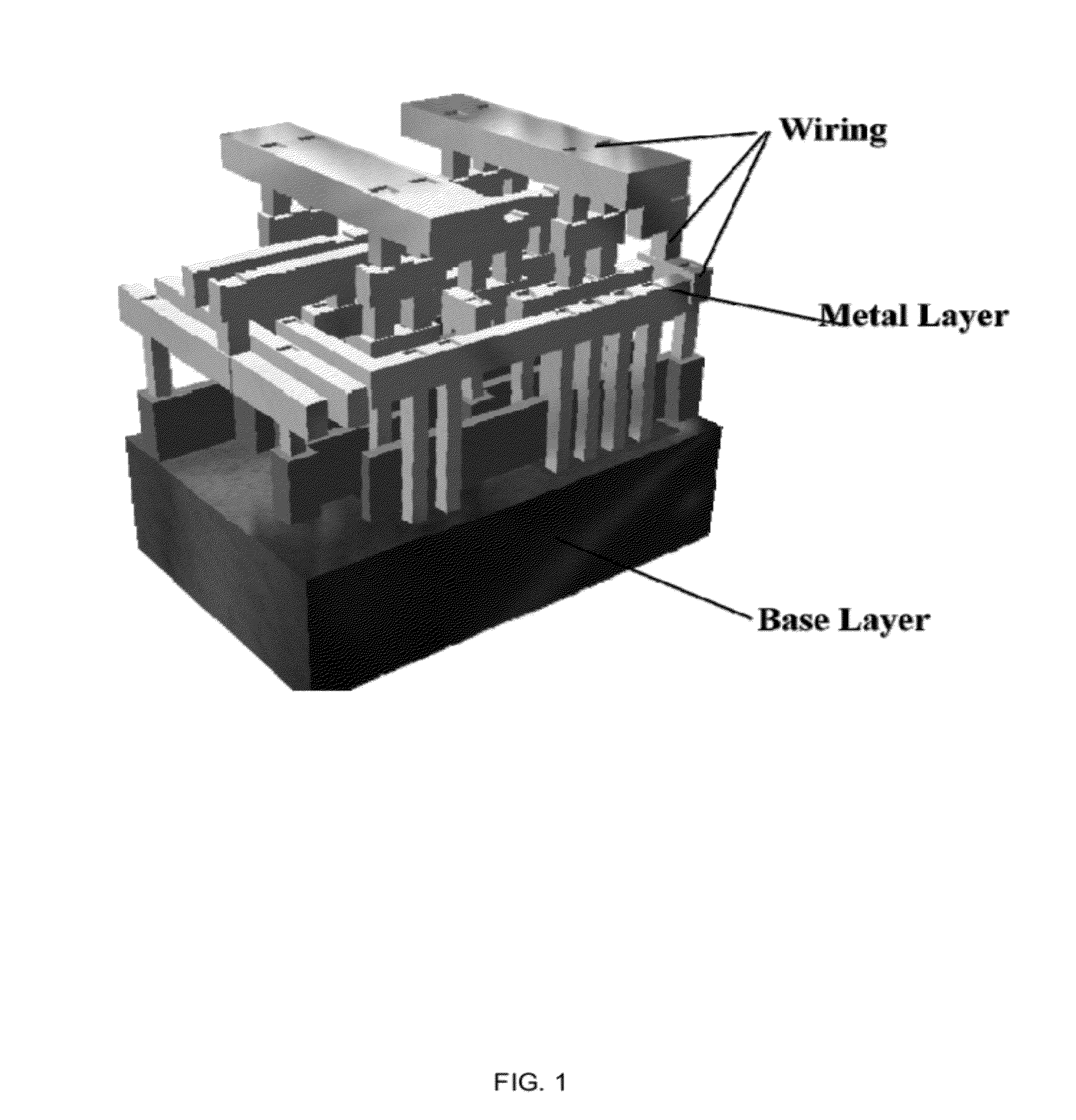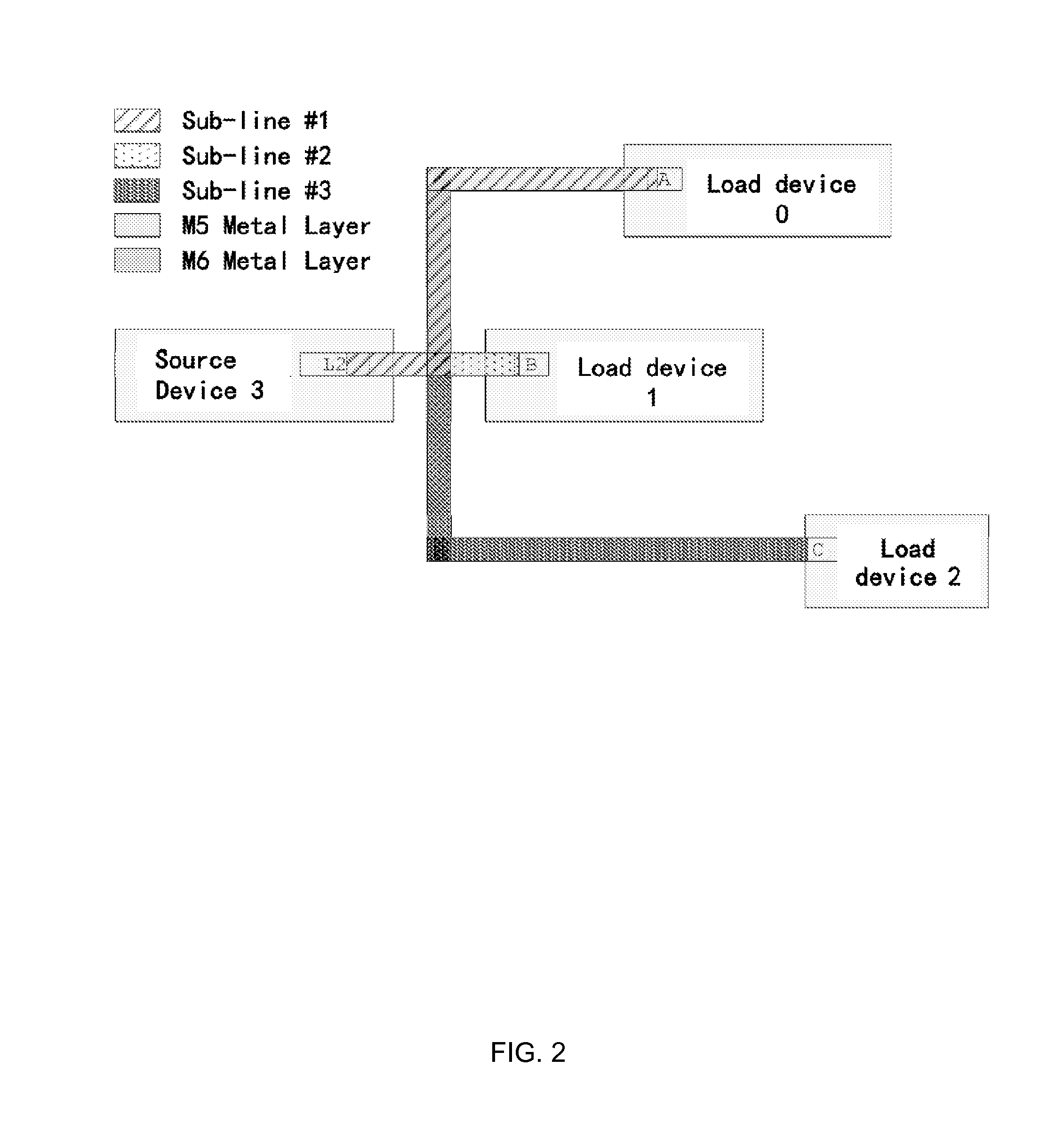Constraint optimization of sub-net level routing in asic design
a technology of constraint optimization and routing, applied in the field of optimizing connection constraints in integrated circuit design, can solve the problems of chip failure to operate reliably (e.g., execute logic operations as intended), chip failure to meet the requirements of the design,
- Summary
- Abstract
- Description
- Claims
- Application Information
AI Technical Summary
Benefits of technology
Problems solved by technology
Method used
Image
Examples
Embodiment Construction
)
[0024]Embodiments will be described in more detail with reference to the accompanying drawings. Embodiments may, however, be embodied in various other forms and should not be construed as limited to the embodiments set forth herein. Rather, these embodiments are provided so that the disclosure is more thorough and complete, and will fully convey the scope of the disclosure to those skilled in the art.
[0025]Typically, an integrated circuit design can be deemed to be successful when both timing closure and physical closure are simultaneously achieved. During the design process, timing analyses can be carried out to ascertain whether the timing of the IC being designed is closed (e.g., whether timing closure is achieved). Typically, the timing analysis is relatively coarse at the start of the IC design cycle and becomes finer / closer to the timing of a real IC towards to the end design cycle. However, each at each step in the design process (e.g., as additional logic units are added to...
PUM
 Login to View More
Login to View More Abstract
Description
Claims
Application Information
 Login to View More
Login to View More - R&D
- Intellectual Property
- Life Sciences
- Materials
- Tech Scout
- Unparalleled Data Quality
- Higher Quality Content
- 60% Fewer Hallucinations
Browse by: Latest US Patents, China's latest patents, Technical Efficacy Thesaurus, Application Domain, Technology Topic, Popular Technical Reports.
© 2025 PatSnap. All rights reserved.Legal|Privacy policy|Modern Slavery Act Transparency Statement|Sitemap|About US| Contact US: help@patsnap.com



